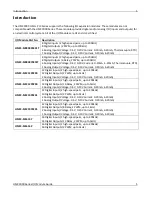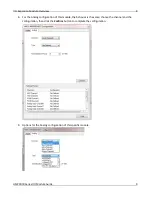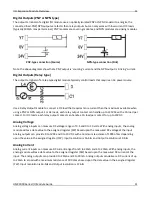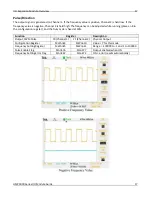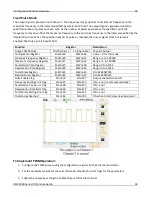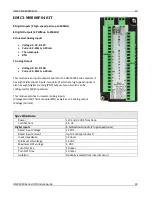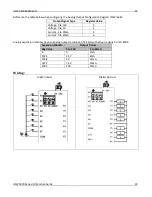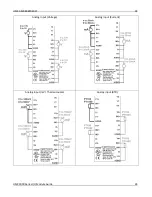
I/O Expansion Module Overview
10
HMC3000 Series I/O Module Guide
10
Common Terms and Definitions
This section defines some common terms used to describe various types of inputs and outputs. The terms
explained below are generic descriptions. Be sure to consult the datasheet for the specific requirements when
installing and wiring a module.
Digital Inputs and Outputs
Digital inputs provide physical connections and interpretations of input devices using discrete signals. The input
is represented in the PLC input registers as a 1 for the on state and 0 for the off state. Each digital input terminal
is associated with an internal Input Coil (X) in the tag database of the HMC3000. Similarly, each digital output
terminal is associated with an Output Coil (Y).
Analog Inputs and Outputs
Analog inputs provide physical connections and interpretations of input devices using analog signals. The input
range depends on the type of input device. Configure analog inputs to work with current or voltage sources.
Each analog input terminal is associated with an internal Input Register (XW) in the tag database of the
HMC3000. Similarly, each analog output terminal is associated with an Output Register (YW).
Sinking versus Sourcing
These terms refer to the type of digital inputs or outputs used. A sourcing I/O provides a voltage source, and a
sinking I/O provides a ground. Any module that is not bidirectional (meaning current can go in either direction)
requires that the circuit conduct current in a specific direction. In order to have current flow, each I/O terminal
on the expansion module must have a return path or a signal ground connection. In most modules, multiple I/O
terminals share the signal ground connection.
For a sourcing module, the current flows out of the expansion module terminal and into the common (signal
ground) terminal. The term source indicates the terminal on the expansion module provides the current to the
switch contact or load.
For a sinking module, the current flows into the expansion module terminal and out of the common terminal on
the I/O module. The term sink indicates the terminal takes in the current from the switch contact or load.
Note: Arrow indicates current flow direction
Summary of Contents for HMC3-M0808P0401T
Page 26: ...HMC3 M0808P0401T 26 HMC3000 Series I O Module Guide 26...
Page 34: ...HMC3 M0808Y0401T 34 HMC3000 Series I O Module Guide 34...
Page 41: ...HMC3 M1212P0200 41 HMC3000 Series I O Module Guide 41 HSC Quadrature...
Page 48: ...HMC3 M1212Y0200 48 HMC3000 Series I O Module Guide 48 HSC Quadrature...
Page 56: ...HMC3 M1210P0201 56 HMC3000 Series I O Module Guide 56...
Page 67: ...HMC3 M1614Y 67 HMC3000 Series I O Module Guide 67 HSC Single Phase Down Counter HSC Quadrature...
Page 71: ...HMC3 M1616P 71 HMC3000 Series I O Module Guide 71 HSC Single Phase Down Counter HSC Quadrature...
Page 72: ...HMC3 M1616P 72 HMC3000 Series I O Module Guide 72...





